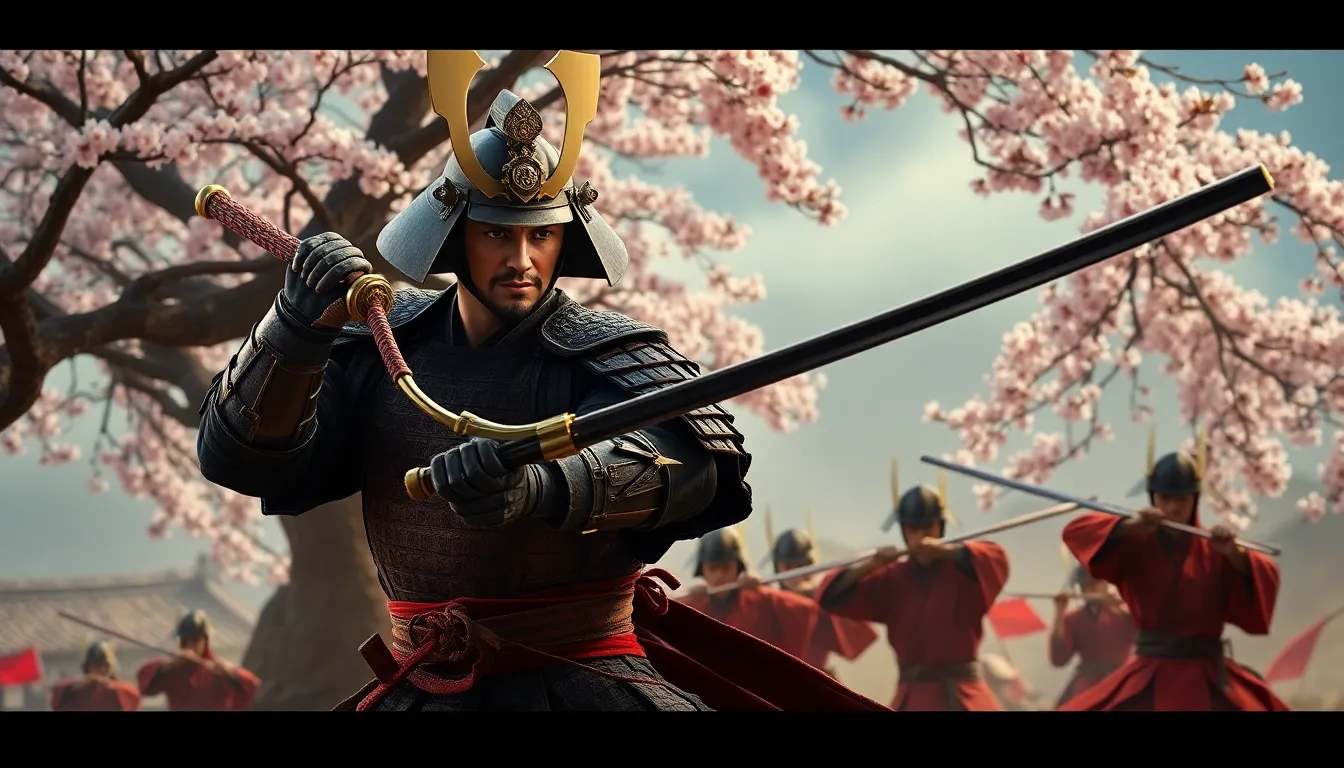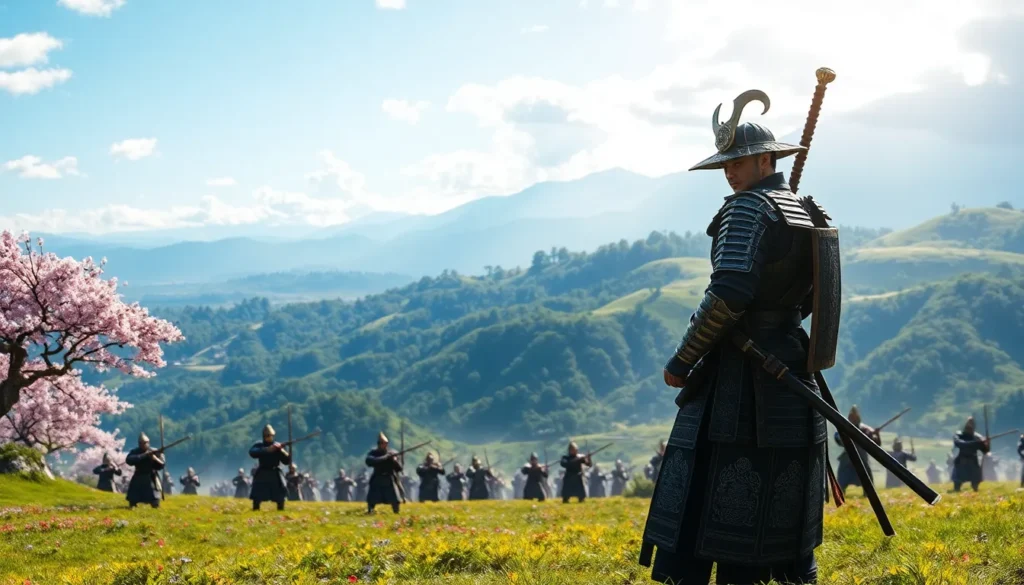Table of Contents
ToggleIn the heart of feudal Japan lies a breathtaking world filled with breathtaking landscapes and epic battles, but nothing quite compares to the adrenaline rush of a standoff in Ghost of Tsushima. Picture this: the sun setting over the horizon, the wind whispering secrets through the grass, and you, the lone samurai, facing off against a band of ruthless Mongol invaders. It’s a moment that transforms mere gameplay into cinematic glory.
Standoffs aren’t just a flashy way to slice through enemies; they’re a test of skill, timing, and a dash of courage. With a single button press, players can feel the weight of their ancestors on their shoulders. So, grab your katana and prepare to dive into the art of the standoff, where every heartbeat echoes the spirit of a warrior and every victory tastes like sweet, sweet revenge.
Overview of Ghost of Tsushima Standoff
Standoffs in Ghost of Tsushima create intense gameplay moments, immersing players in feudal Japan’s epic battles. Players face Mongol invaders in a series of duels that test precision and timing. Engaging in a standoff initiates a high-stakes confrontation, where every decision can sway the outcome.
The unique mechanics involved demand players to anticipate enemy movements and react swiftly. Mastery of the standoff system contributes to a player’s overall proficiency, enhancing their samurai journey. Moments of tension build as opponents confront one another, with the atmosphere thickening as players prepare for the imminent clash.
Winning a standoff isn’t purely about reflexes; strategy plays a crucial role. Players must identify when to strike and when to wait, balancing patience with the need for action. Each successful standoff reinforces the emotional connection to the character’s legacy.
The visual and auditory elements significantly heighten the experience. The stunning visuals, complemented by an evocative score, immerse players deeper into the world. Participants feel the weight of their samurai heritage during these pivotal encounters, transforming combat into an art form.
With dynamic storytelling interwoven into standoffs, players gain insights into the characters and their struggles. Brief dialogues during these encounters unfold compelling narratives, enriching the overall experience. Standoffs in Ghost of Tsushima embody the essence of honor and courage, inviting players to celebrate their victories with pride.
Gameplay Mechanics

Standoffs in Ghost of Tsushima serve as pivotal moments, engaging players in intense confrontations. The gameplay mechanics surrounding standoffs enhance the experience, emphasizing skill and strategic thinking throughout each duel.
Initiating a Standoff
To initiate a standoff, players must approach an enemy battle group and select the standoff option. Heightened tension builds in the area as players face multiple foes. Timing plays a major role in this mechanic; gamers must wait for the enemy leader to make the first move. Once the standoff begins, players enter a state of focus, immersing themselves in the gravity of the moment. Successfully executing the standoff boosts morale and vastly impacts the battle’s outcome.
Timing and Execution
Timing and execution define the success of a standoff. Players must gauge the enemy’s movements carefully to strike at the perfect moment. The key lies in pressing the attack button as soon as the enemy lunges forward. Mastering this timing creates an exhilarating experience, allowing players to execute devastating counterattacks. Each successful standoff not only clears the battlefield of foes but also builds a sense of accomplishment and honor, further emphasizing the player’s role as a skilled samurai. The balance of precision and instinct drives the emotional weight of these encounters, reinforcing their significance in the game’s narrative.
Strategies for Successful Standoffs
Standoffs in Ghost of Tsushima require keen strategies for success. Players must apply different techniques to gain an advantage over adversaries.
Duel Approaches
Choosing the right duel approach affects outcomes. Players can opt for aggressive tactics, quickly closing the distance and striking first. Alternatively, a defensive style may work by observing the enemy’s movements and reacting accordingly. Each enemy type has its own attack patterns, which require tailored responses to exploit weaknesses. Observing the enemy establishes opportunities for counterattacks. Some players find success with patience, waiting until the enemy makes a clear move before responding. Engaging in varied approaches keeps battles fresh and unpredictable, enhancing gameplay.
Mind Games and Psychology
Psychological tactics play a significant role in standoffs. Understanding opponents fosters strategic decision-making. Players often employ feints to mislead enemies, creating openings for decisive strikes. Confidence can intimidate foes, leading them to hesitate or misjudge attack timing. Reading the enemy’s body language provides insights into their next move. Players engage in calculated risks, weighing the benefits of committing to an attack versus waiting for the right moment. Building mental resilience enhances overall performance, as successful engagements boost morale and player connection to their character’s journey.
Visual and Audio Elements
Standoffs in Ghost of Tsushima come alive through stunning visuals and immersive audio. These elements enhance the gameplay experience, truly embodying the essence of Japan’s feudal era.
Stunning Graphics
Stunning graphics offer breathtaking landscapes and meticulously designed environments. Each location, whether it’s the lush fields of Tsushima or the misty mountains, captures players’ attention. Dynamic weather effects add depth, making battles feel even more alive. Characters feature detailed animations during standoffs, displaying raw emotions and skill. Visual storytelling unfolds through cinematic effects that heighten tension, drawing players into the action. Every sword clash and dramatic moment showcases the game’s high level of artistry. Players find themselves fully immersed in this beautiful, handcrafted world that celebrates samurai culture.
Immersive Sound Design
Immersive sound design plays a crucial role in creating an engaging atmosphere. Players hear the rustling leaves, distant birds, and the soft wind brushing through trees, establishing a sense of place. The sound of clashing swords during standoffs generates excitement and raises adrenaline levels. Musical scores evoke emotions, enhancing every pivotal moment in gameplay. Voice acting adds depth to character interactions, allowing players to connect on a personal level. Subtle ambient sounds enrich the environment, making each encounter feel unique. Through these audio elements, the game cultivates a profound sense of honor and bravery during intense duels and encounters.
Impact on Player Experience
Standoffs significantly enhance player experience in Ghost of Tsushima. Each encounter immerses players in a thrilling, high-stakes duel requiring precision and timing. Successful standoffs provide a sense of achievement, allowing players to feel like true samurais. Players engage with the game’s narrative deeper as they confront Mongol foes, embodying the spirit of their ancestors.
Mastering standoff mechanics impacts the overall gameplay experience. Players develop keen tactical skills to navigate different enemy types. The necessity of reading body language and anticipating attacks adds layers of strategy. Engaging in varied approaches keeps players on their toes, delivering unpredictable moments in battle.
Visual and auditory elements amplify the standoff experience. Stunning graphics showcase Japan’s landscapes, creating a visually captivating environment. Weather effects and character animations deepen the emotional connection during confrontations. Sounds of clashing swords and nature immerse players further, heightening excitement amidst battles.
Furthermore, each victory in a standoff reinforces a player’s status as a skilled warrior. Clearing enemies from the battlefield boosts morale and deepens the player’s connection to their journey. Standoffs transform the way players face challenges, inviting them to embrace their role with pride.
Through these mechanics and elements, Ghost of Tsushima crafts an unforgettable combat experience. Players not only engage in battles but also celebrate the legacy of samurai honor and courage.
The standoff mechanics in Ghost of Tsushima elevate the gameplay experience to new heights. Each duel becomes a thrilling test of skill and strategy that resonates with players on a deeper level. The combination of stunning visuals and immersive audio enhances the emotional weight of each confrontation.
As players master the art of the standoff they not only improve their combat abilities but also forge a stronger connection to their samurai identity. This unique blend of action and narrative invites players to embrace their journey with pride. Ultimately the standoff moments encapsulate the essence of honor and courage that defines the samurai legacy, making them an unforgettable part of the game.







